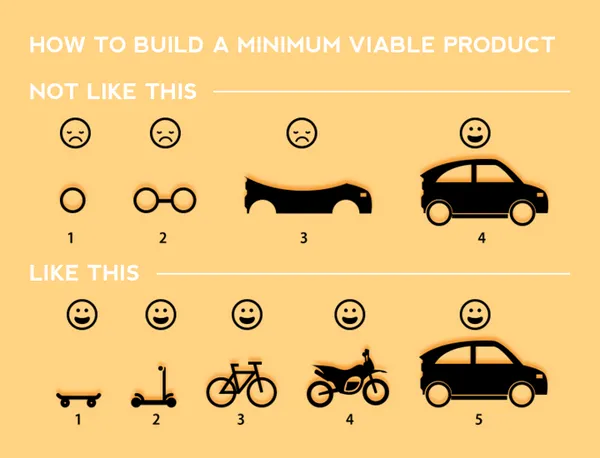

by Editor
Why do advertisers need their own media buying, and how is it organized? What are the differences in media buying in CPA teams and in products? How does an in-house media buying department help advertisers create a product that webmasters then successfully run? Is it more efficient to raise your own in-house media buying or work with outsourcing? Find answers to these and other questions about media buying on the advertiser side in this material. Let's go.

Why do advertisers need their own media buying
The CPA market has long been accustomed to the fact that an affiliate network or a direct advertiser provides offers for promotion, including detailed information about them. EPC, CR, approval confirmation rate, hold, PostClick Cookie, and other parameters allow the webmaster to predict whether they will profit from the offer based on the traffic source they are working with.
Few novice webmasters think about why advertisers offer a specific set of landing pages, allow or disallow specific traffic sources, or set a test cap. The actions of the advertiser that led to these decisions remain “behind the scenes” for the webmaster, who receives a ready-to-promote product.
It’s evident that simply creating a beautiful website with spins, obtaining a casino license, linking a payment system, and handing “it” over to webmasters is a path to nowhere. Webmasters want to take an offer to earn from it, not spend money on testing a raw product. Therefore, its “readiness” is preceded by painstaking work related to its testing and debugging. This is precisely what the in-house media buying team in tandem with product management is engaged in.
Advertiser's buyers conduct split tests to determine which sources bring the best traffic and which ones don't. They collect analytics on how interesting the product is to users overall, monitor retention, make additions, identify areas where usability can be improved, and so on. The result of the in-house media buying team's work is the creation of a targeted offer for affiliates with a set of statistical data and “rules of the game”.
Let's take a closer look at what the “inner workings of the in-house media buying” entails. We'll break down the departments it consists of and who is responsible for what.

The structure of the in-house media buying unit
The media buying department at advertisers consists of the following specialists:
- Business Developers – involved in developing the overall strategy for positioning and promoting the product;
- Designers – responsible for the visual design of the website;
- Developers – refine the product during tests and bug identification. They also create applications from which traffic will be directed;
- Media Buyers – launch advertisements from various sources and collect statistics on campaigns;
- Retention Managers – analyze user interactions with the product and devise ways to increase customer LTV.
BizDev
The department is typically led by a bizdev (business developer). He bears the responsibility for creating the final product adapted to the affiliate market. Therefore, the effectiveness of spending tens of thousands of dollars on testing and refining the product depends on his professional qualities. High-risk products have their own specifics, and an experienced business developer who has successfully handled projects in, for example, e-commerce, may not necessarily excel in managing an online casino product.
The salaries of project development managers in affiliate marketing for verticals like gambling, betting, and crypto start at $5000 per month. Additionally, business developers receive generous bonuses from advertisers for achieving set KPIs.
The team lead of media buyers
Fully organizes the process of:
- creation and testing of creatives, landing pages — together with designers;
- recruiting and micromanaging media buyers;
- launching advertising campaigns on all traffic sources;
- analyzing results of advertising campaign performance;
- launching campaigns on retargeting platforms — together with the retention manager.
The team lead in in-house media buying should have experience working with various traffic sources. In addition, he should be able to work with retargeting and have a good understanding of data analysis. Essentially, his responsibilities include the practical part of testing the product. The kind of product that affiliates will receive at the output depends on how professional a team of media buyers will the team lead select.
Attracting an experienced team lead into in-house media buying is not an easy task. A good specialist is likely already working in a team where, in addition to the base salary, he receives a percentage of the team's profit. Consequently, the only way to lure him away is by exceeding his income at the current position. The income of a team lead in a media buying team dealing with gambling, betting, or crypto typically ranges from $8000 to $12000.

Work of in-house media buying
In general, media buying for an advertiser looks like this:
- The product manager hands over the MVP with several landing pages to the media buying department.
- Together with the team lead, the business developer defines the product promotion strategy, including traffic sources, creative approaches, test budgets, bids, and more. They prepare the technical task for developers to create mobile applications.
- Developers code the applications.
- Media buyers launch several advertising campaigns from different sources. Landing pages and creatives are tested with separate campaigns in each source. The testing also covers all the GEOs where the product is planned to be distributed.
- The business developer and the team lead analyze the statistics of the test campaign determining which landing page/design resonated better with users. They also examine the sources of traffic with the best retention and where there is a higher number and sum of repeat deposits. Then, they prepare recommendations for product management to improve the product.
- The product manager, together with developers, refines the product based on the media buyers’ recommendations.
- Media buying conducts a test campaign for the updated product.
- The business developer and the team lead gather analytics, compare the qualitative indicators of the updated product with the MVP. They also identify the best traffic sources and methods of acquiring it.
- The retention manager, along with the team lead, launches advertising campaigns on retargeting platforms.
- The business developer, retention manager, and team lead analyze the parameters of user return and retention in the product. They compile a list of recommendations for its improvement and pass them to product management.
- Product managers refine the final version of the product and, together with the team lead and business developer, draw up an offer for affiliates.
- The media buying launches the ready offer for all GEOs from all accepted traffic sources. They collect statistics to supplement the offer with parameters such as EPC, CR, hold, and so on.
- The tested offer is handed over to the product manager for release to the public.
Traffic sources that in-house media buying works with
As mentioned earlier, one of the tasks of in-house media buying is to identify which sources monetize traffic in the product the best. The second task is to adapt the product to a maximum number of popular sources. In other words, make it so that the traffic converts profitably from as many platforms as possible. For these reasons, buyers conduct tests on:
- Facebook;
- Google Ads;
- TikTok Ads;
- Push-networks.
Also, the team uses specialized platforms that allow working with traffic through remarketing:
- AdRoll;
- AdNgin;
- RTB House;
- ADWIST;
- Getloyal;
- reEnter;
- Ritorno;
and others.

Outsource vs in-house
Each team entering the market with a high-risk product faces the dilemma of whether to build its own in-house media buying or outsource product testing. Below, we’ll discuss the pros and cons of both options.
The main advantage of engaging external webmasters for product testing is the absence of the need to establish a separate business process within the company. It’s possible to find a team of webmasters who will test the product and provide their superficial opinion about it. In this case, you definitely shouldn’t be counting on work with remarketing and product improvement.
Third-party buyers won’t try to transform the product because they lack expertise in this area. What does a buyer do with an offer that doesn't convert? Right, they stop running it. A classic webmaster is organized in such a way that affiliates test various creatives, landings, sources, but not the product itself. Therefore, involving affiliates in product testing is fraught with budget drain and mediocre results. This in no way improves the product.
Creating your own media buying involves significant expenses for the company on deployment of the necessary infrastructure and hunt for top-notch specialists.
The most challenging part is the selection of management in the form of a business developer and a team leader who can build the business process. If the product manager can act as a business developer, the team leader's role is more complex. It should be an experienced webmaster with organizational skills and analytical thinking. He must efficiently distribute tasks among buyers and be able to work with statistics.
An undeniable advantage of in-house media buying is the quality testing of payment gateways with traffic from different sources and GEOs. In-house media buying can also test the entire funnel and tailor it to specific GEOs and sources. Testing the product in-house allows building the economy based on the full LTV of the customer, ultimately tailoring it to the affiliate market. In other words, the tested final product is attractive to webmasters because:
- it has clear, understandable, and achievable traffic KPIs;
- there is a minimum hold, as the advertiser can quickly assess the quality of traffic;
- all nuances of GEO, source are taken into account, and the product converts well from the start;
- there are no bugs since they were all fixed during the testing phase.
The picture of the world with in-house media buying looks ideal, but there is one big “BUT”. As a well-known person once said, “Personnel is everything”. This statement is very relevant for building in-house media buying. If you make a mistake in choosing the team lead, buyers, or bizdev, you can easily waste the budget on testing the product, just like in the situation with involving external webmasters.
Obviously, when developing a product, businesses expect to recoup their investments and profit from it. By releasing a raw product on the market, there is a risk that affiliates may not accept it because it’ll be challenging to promote. However, based on the above, the question remains open as to which path to choose for building an in-house media buying team. Both options entail the risk that the team may not perform adequately, and the product may not be ready for release on the market.

Alternative option
For building a qualified in-house media buying, it’s best to entrust this task to professionals. There are agencies specializing in personnel recruitment that not only find candidates but are also responsible for delivering results. In other words, businesses provide them with specific tasks, such as transforming a raw product to meet certain metrics.
Since all product metrics can be measured, the business settles with the agency only after the desired result is achieved. This result can be measured in terms of EPC, CR, the share of confirmed approvals, and so on. Accordingly, the agency, unlike webmasters from the market brought in for product testing, is interested in ensuring that the advertiser achieves the desired outcome.

by Editor



comments ....(0)
Leave a comment
You must be in to leave a comment